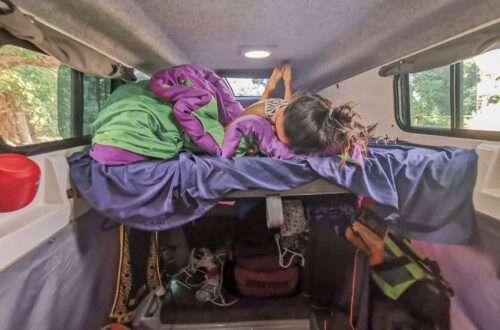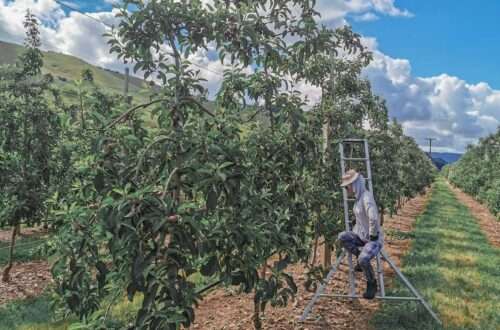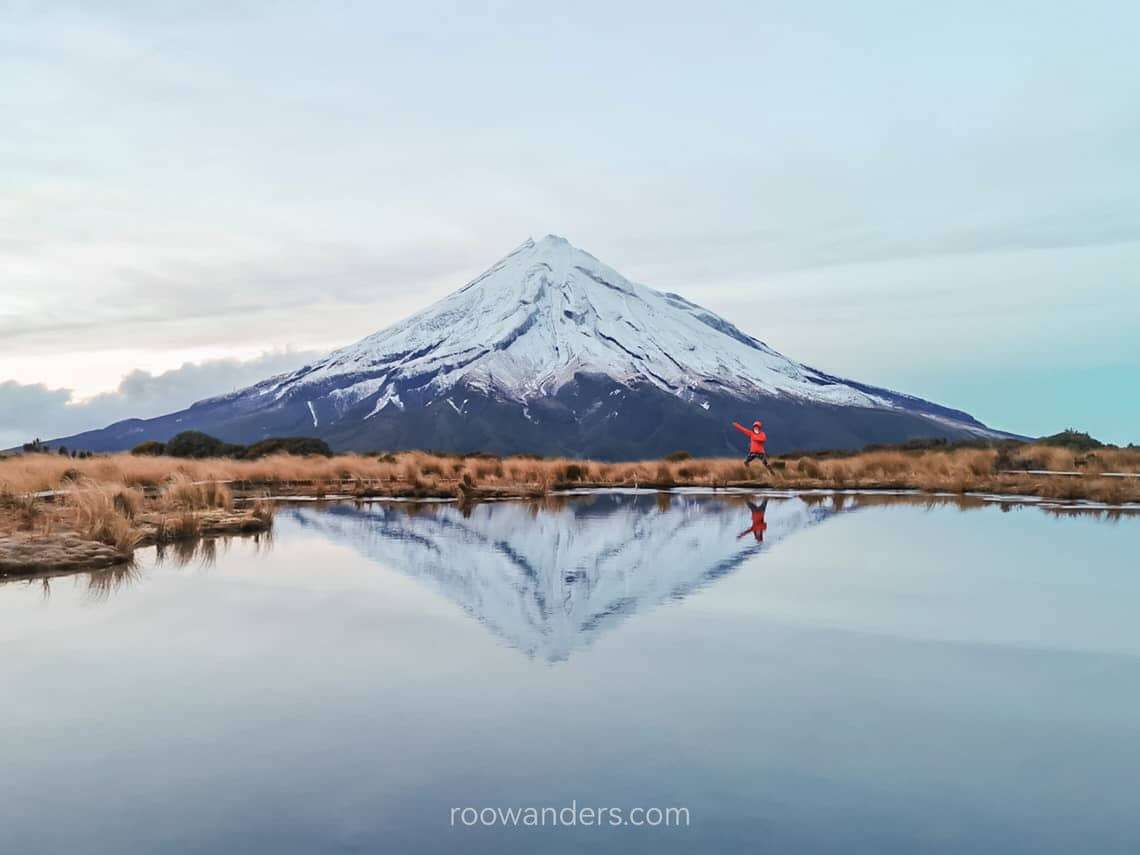
Mount Taranaki: To the Summit and the Tarn
Beautiful Taranaki, the Mount Fuji of New Zealand!
Mount Taranaki, formally known as Mount Egmont, is a stratovolcano located west of the North Island.
The symmetrical mountain at the centre of Mount Egmont National Park is a sleeping volcano! Its last eruption was in the 1850s. Mount Taranaki grew to a height of 2518 m above sea level, with lush greenery covering at least an area about a third of it.
The mountain never fails to awe us whenever we drive towards New Plymouth.
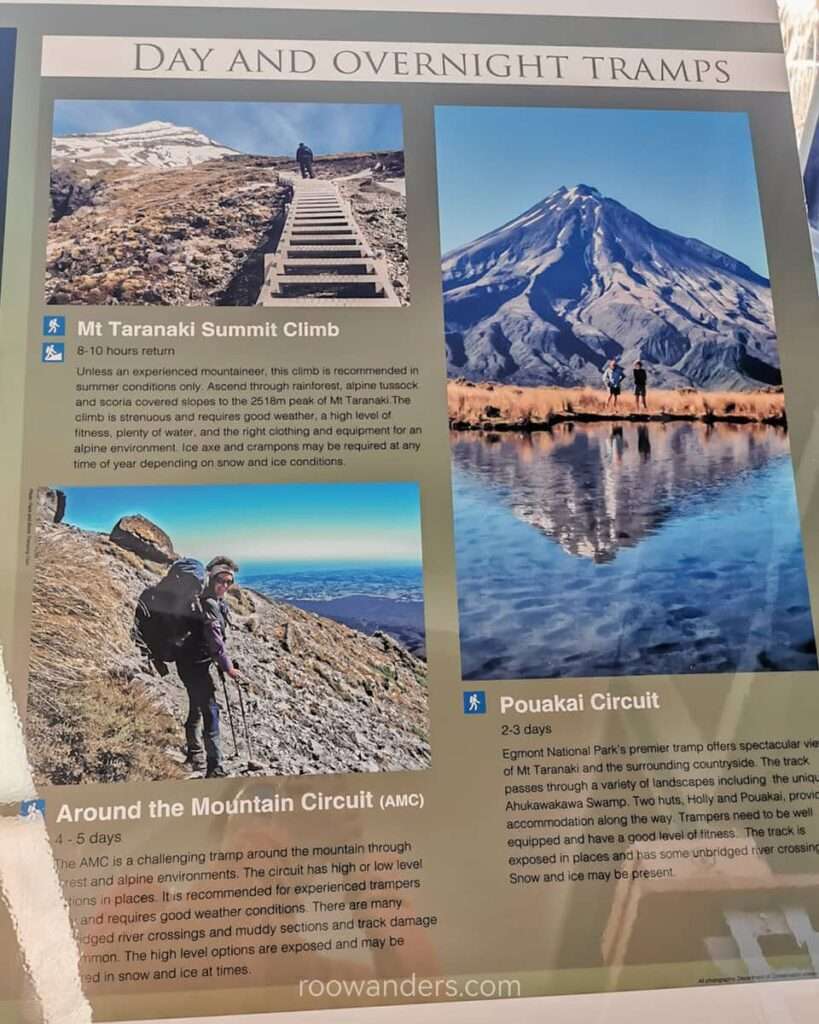
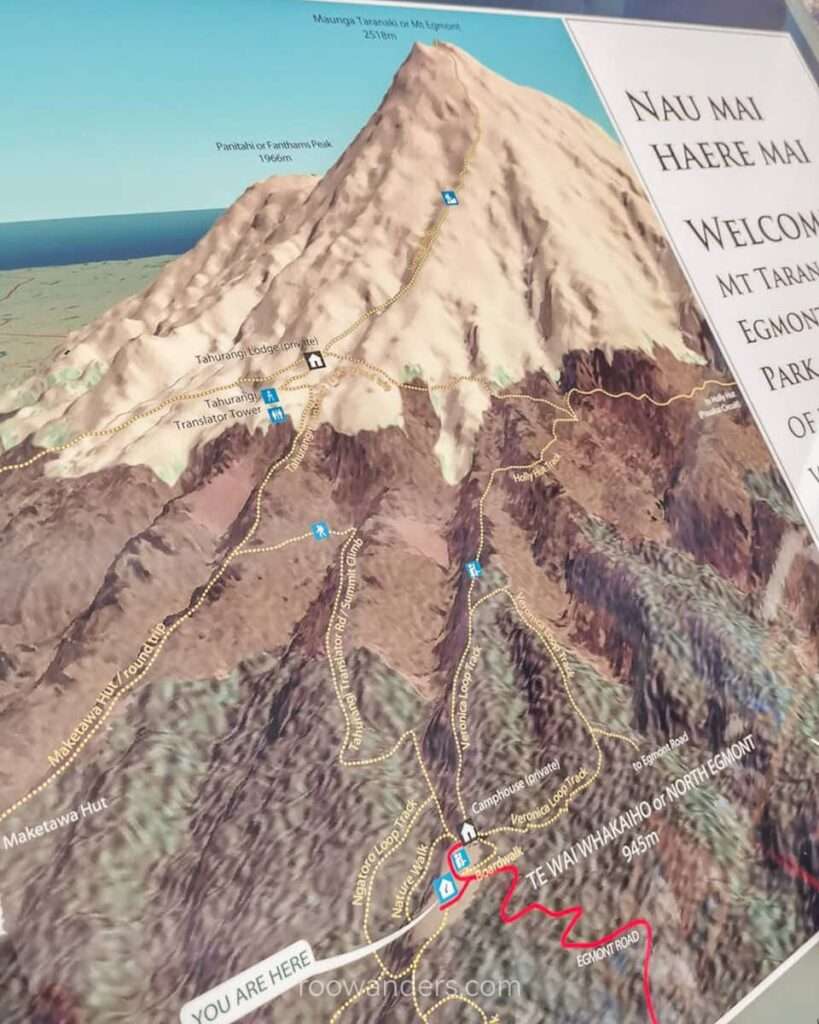
I did this trip in 2021. Post may be updated periodically.
Legends
According to Maori legend, Mount Taranaki left his ancestral home after a dispute over the maiden volcano Pihanga. Following my adventures along the Whanganui River, I learnt that Pihanga, the wife of Tongariro, was smitten with the taller, symmetrical volcano. It infuriated Tongariro. To avoid a calamity, the grandfather of all volcanoes – Ruapehu – ordered Taranaki to leave the volcano family. His departure towards the west of the North Island carved out the Whanganui River.
It is fascinating to see how the geology of this land and its people’s lives interweave to create a riveting story.
Tracks
Mt Egmont National Park has many walking tracks to suit people of all fitness levels and time constraints – from walks under an hour to multi-day treks.
This post explores the two tracks I have completed around Mount Taranaki. You may find out more about the other tracks on DOC.
My partner and I summited the mountain in the summer of 2021. We returned in the winter of 2021 with a group of friends to check out the tarn for the most popular shot of Taranaki.
Getting There
According to DOC and other relevant websites, there are only three road entry points to the park – Manaia Road, Egmont Road, and Pembroke Road.
We drove through Egmont Road to the visitor centre, where the trek to the summit began. This drive can be intimidating as the roads are narrow and bendy, with visibility limited by the trees. Buffer at least 30 mins to reach the visitor centre from New Plymouth.
As for our second expedition, we left our cars by the edge of the national park and trekked into the Mangorei Track.
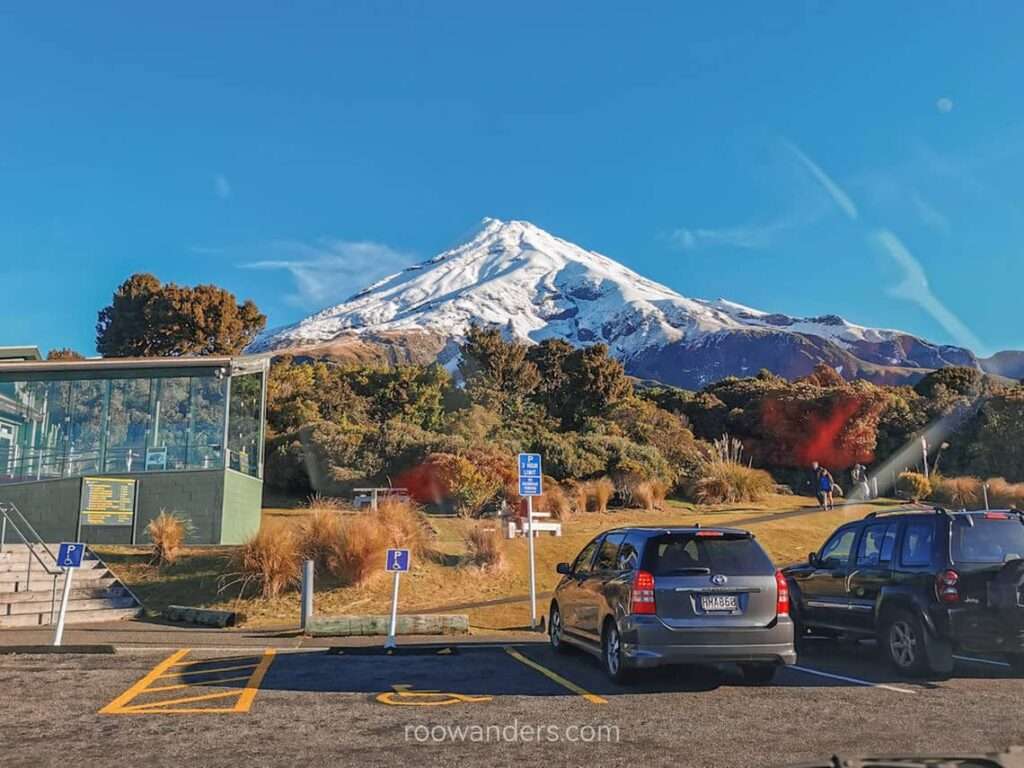
Expedition One: The Summit (2518 m)
Anyone with a reasonably good fitness level should try the summit.
That is, under good weather conditions. People have died attempting the summit.
Do not let the staggering height of the mountain deter you. Trekking up Mount Taranaki was challenging – it defeated all the other volcanoes I have trekked in Indonesia.
But the visage from the top was unparalleled when you find yourself standing above the clouds.
The 1.6 km vertical climb divides into four parts.
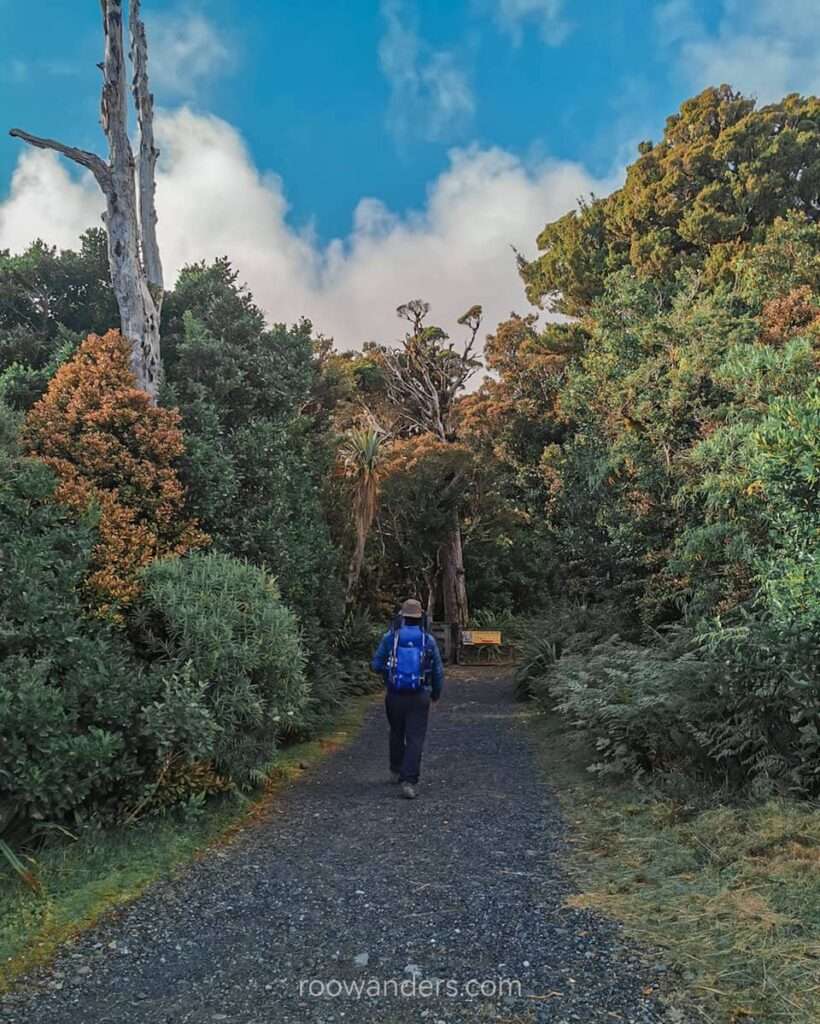
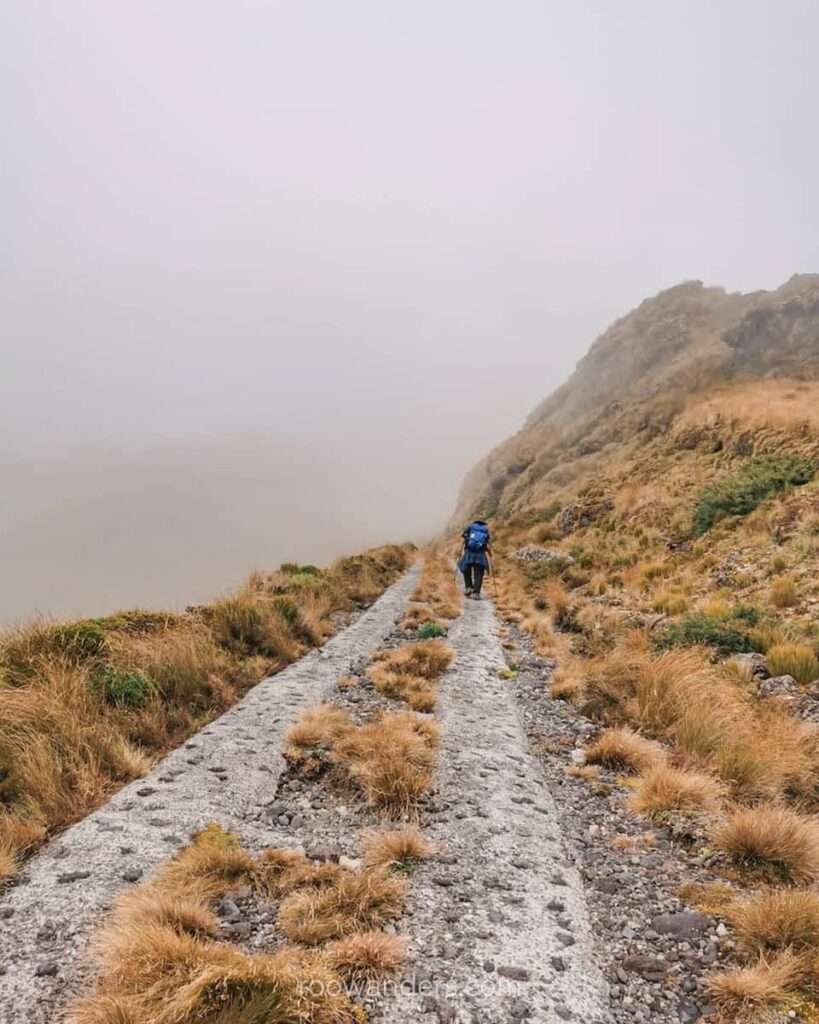
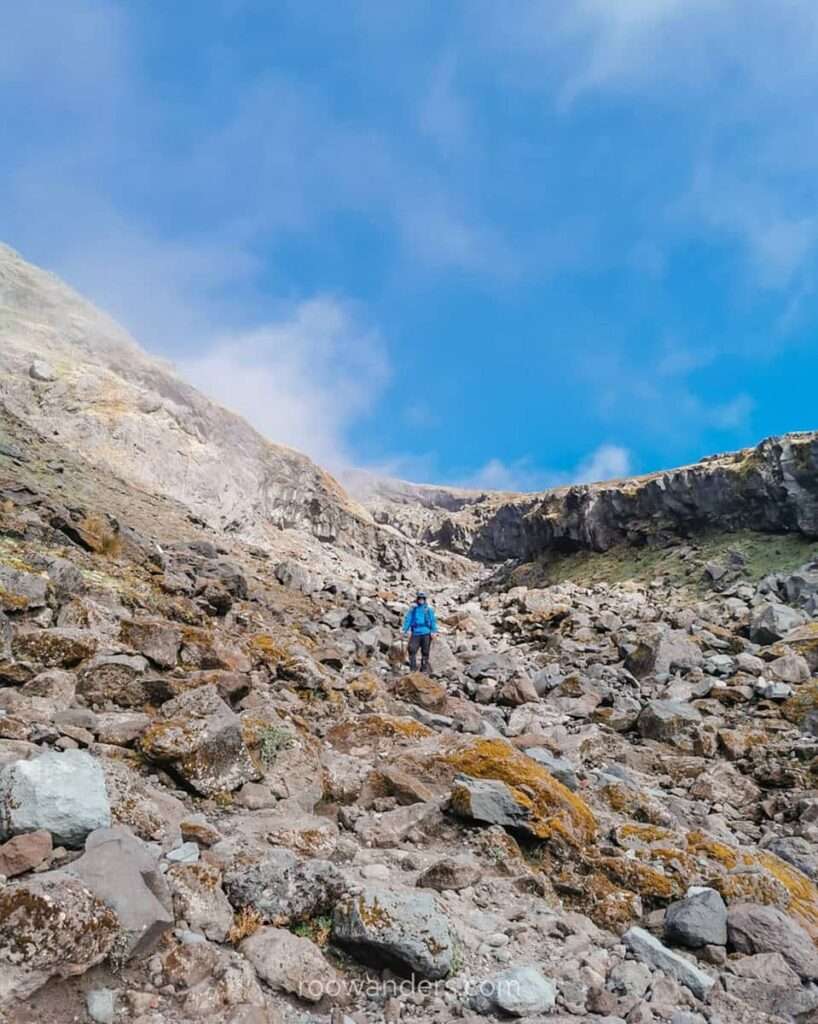
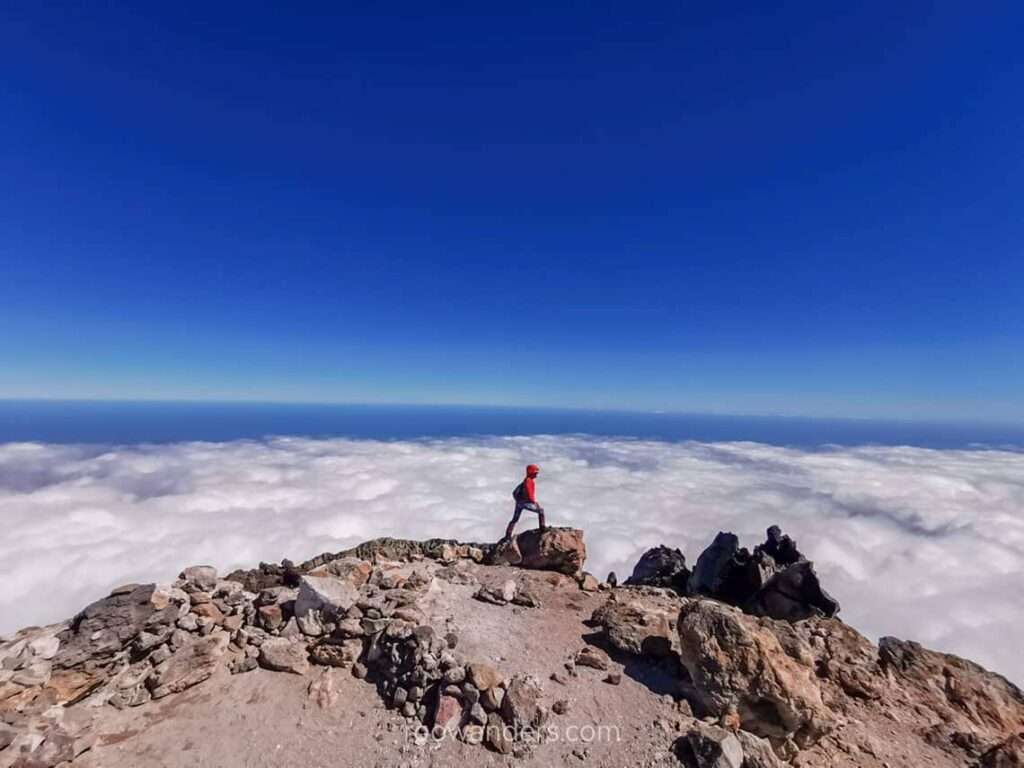
Section One: Stroll in the Park – Visitor Centre to Translator Tower
The first section is a walk in the park compared to the rest. However, the gradient steepened as we trekked closer to the Translator Tower.
‘By the park’: it is literally within the forest.
Jeeps might be able to cruise up from the track marks we saw.
The last few drop toilets by the tower are your final loo to visit before the summit.
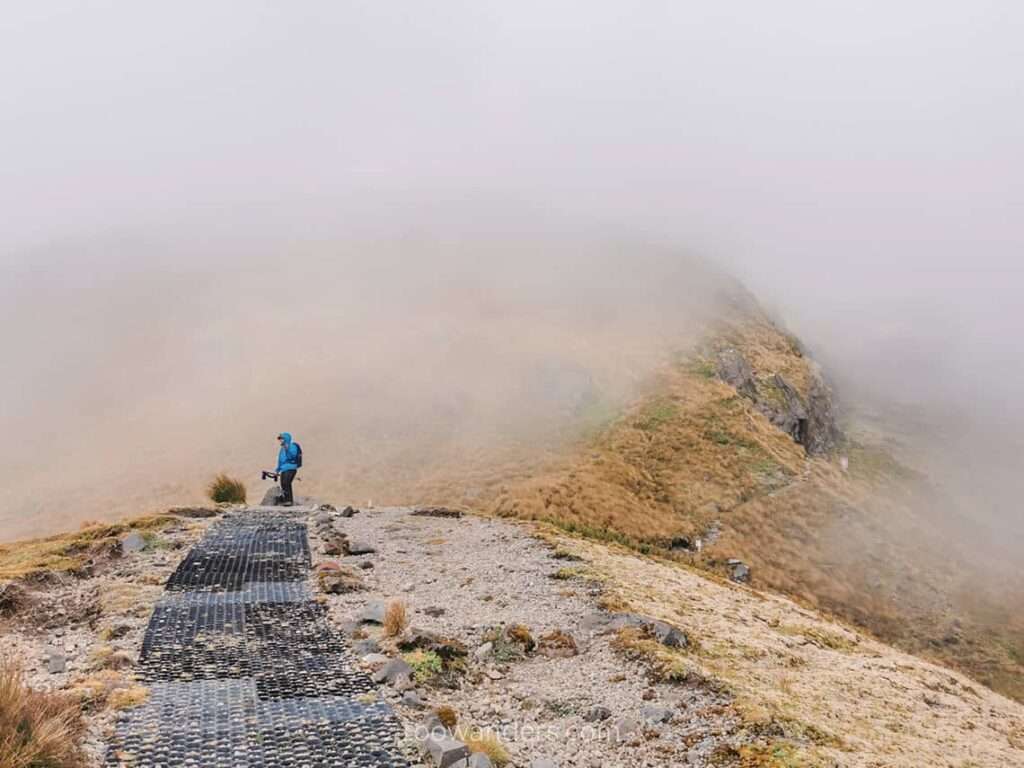
Section Two: Steps, Steps, Steps – Translator Tower to The Scree Slope
We trekked section one under foggy conditions and were worried that bad weather may foil our summit trek.
However, an aunty, who trekked alongside us and who has been doing rounds to and fro the visitor centre and translator tower frequently, predicted that the fog would disperse by afternoon.
And so, with her judgement and our persistence, we went ahead to the hundreds steps challenge.
Section Two mostly features slabs set within the valley of the mountain.
Section Three: Slope of Despair – Scree Slope to The Lizard
We went above the clouds and into Section Three.
Unlike the other volcanoes – including Tongariro’s red crater – that I have trekked, the scree slope of Taranaki was tough with greyish sediments. ‘Tough’ in the sense of texture, but you could say the same for the experience. Soft porous reddish-black rocks cover most of the volcanoes I have visited. It was the usual three-steps-up-two-steps-down push to the top.
Lunch was somewhere in the middle of the slope on one of the rare protruding rocks with lashing winds. We had sandwiches on an exposed terrain overlooking the clouds.
A handful of red signal beams on the death slope acted as our guide. Along the way, we saw a helicopter hovering around the death slope as if they were searching for someone.
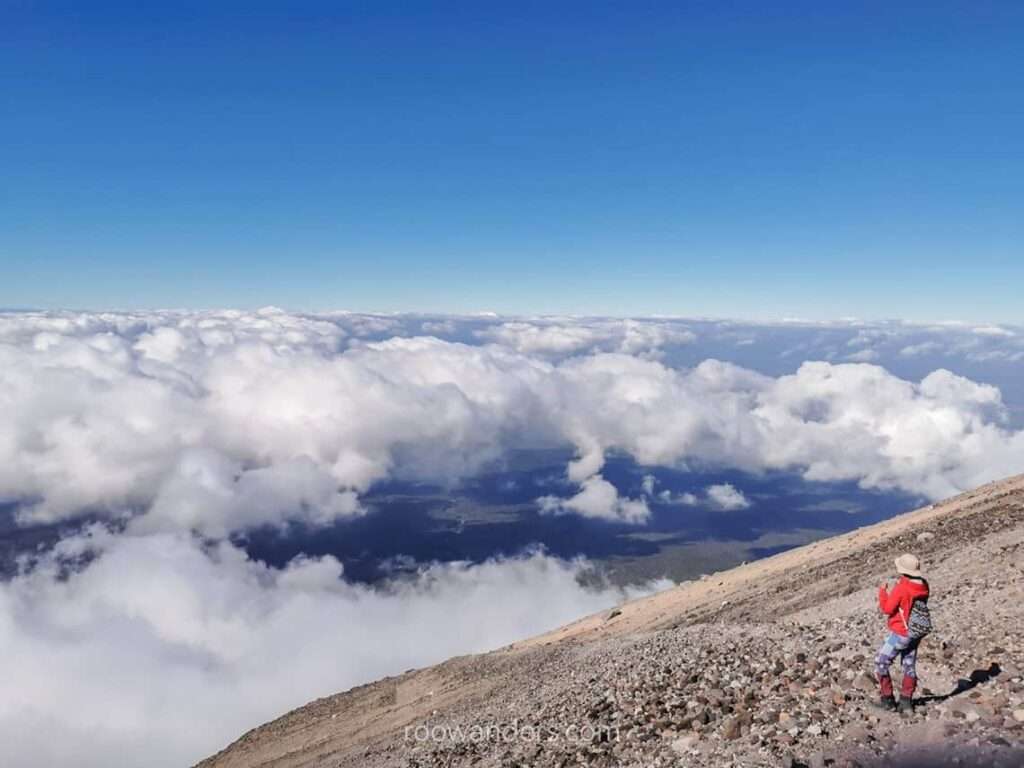
Section Four: Push to Summit – The Lizard to The Top
With the slope behind us, it was back to trekking – or scrambling – on rugged rocks that cut your flesh.
Volcanic rocks are porous and fragile but also sharp and scratchy.
One misstep in this section can cut any exposed skin or twist the ankle. Proper footwear and protective gears are so important in this climb, yet we see people in jeans and sneakers.
We climbed a false summit and descended to a depression covered in snow.
Then it was the last round of scratchy rocks before we finally reached the summit.
Summit
This was what we came for – to claim we have been to the top! Expect strong winds!
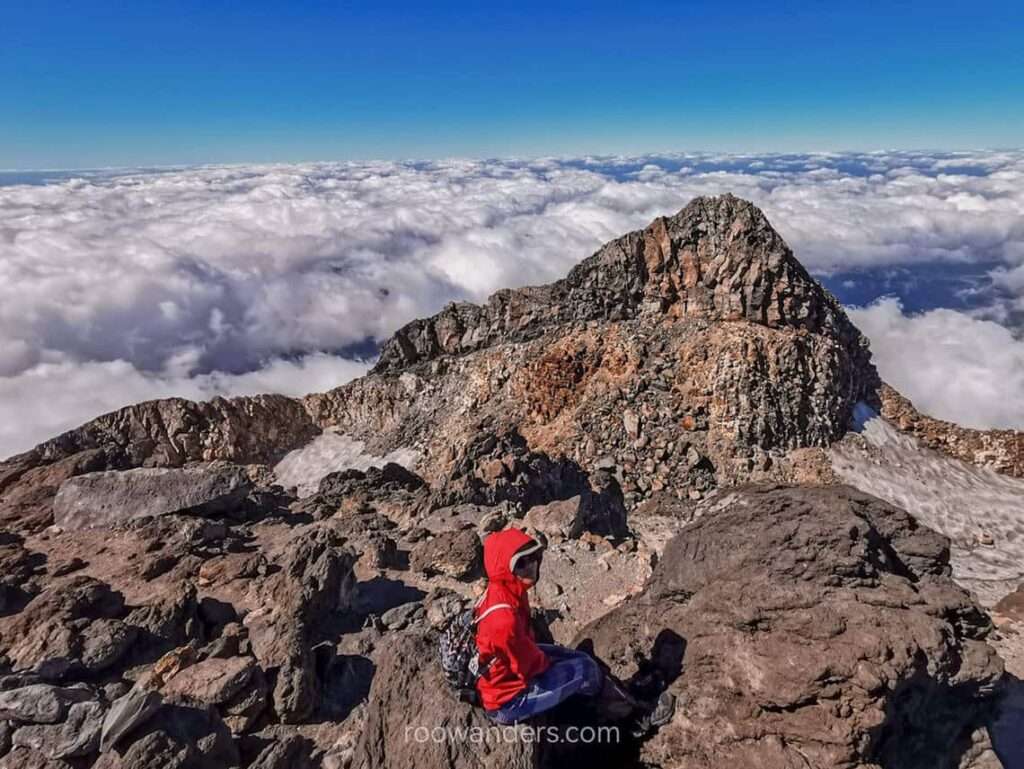
Descent
Going down the mountain was thrice as hard when you factor in the death slope.
Think of the stress our knees and thighs endured to stop us from tumbling as we descend the steep gradient.
I could feel the soles of my new hiking boots crying. We each fell a few times while descending.
The trek took us ten hours, including frequent breaks for photos and fuel. I classify myself as a slow and steady trekker. Those who run hills might complete it in under eight hours.
Taranaki Summit Climb Video
Expedition Two: Pouakai Tarn
Getting to Pouakai Tarn was easy. This trek could be done within a day, but the key to a golden Taranaki is to visit the tarn at sunrise or sunset.
We stayed a night in Pouakai Hut for sunrise in the winter of 2021. The weather was not good before our arrival – it rained for a week – and we could not catch the sunset due to the thick fog. Lucky for us, it dispersed by morning. There were no dazzling golden hues over the mountain but seeing the mountain without any obstruction was good enough.
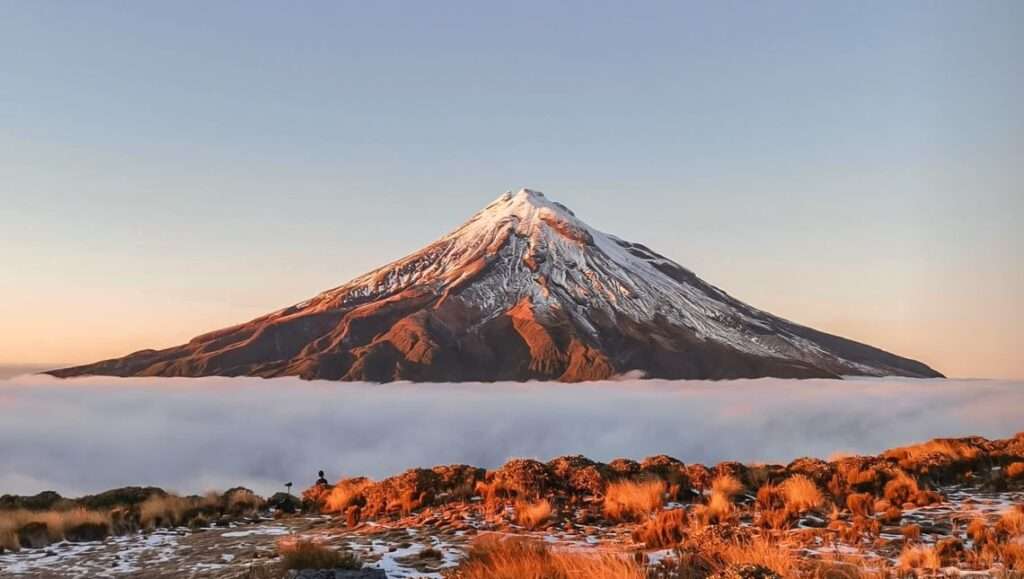
Starting Point: Mangorei Track
We parked our cars at the start of Mangorei Track – a 20-minute drive from New Plymouth.
It was drizzling with light winds when we started.
The wind and rain grew stronger as night approached – sounds disheartening, but the bad weather was a blessing in disguise. Thick blankets of snow covered the mountain white by morning.
If the wind is strong at the carpark, imagine the intensity of the gusts at the hut. Pack enough warm clothes for the night if you intend to sleep in the hut!
Trekking to The Hut
Boardwalks lined the road to the hut, making this trek one of the relatively manicured paths.
It is possible to trek up in jandals with good grips.
We walked under tree covers until the last part, which was exposed and could get very chilly if the wind was strong.
It took us under two hours to trek from the carpark to the hut.
The Hut
Bookings are necessary as the hut is very popular – there are only 16 bunk beds. Book early to avoid disappointment. It costs us NZD 15 per person then.
There are two bunk rooms and a small common area with a heating place. The bunk room within the common area would be warmer than the other room by the side of the entrance. I have a thick down sleeping bag, so the cold was not an issue. Reach the hut early if you want to sleep in the warmer room as the hut operates on a first-come-first-basis despite the reservations.
Drop toilets were situated a distance away from the hut. Beware of slipping on the grass early in the morning when going to the loo.
The Tarn
A 15 mins short walk on boardwalks to a small lake facing the mountain.
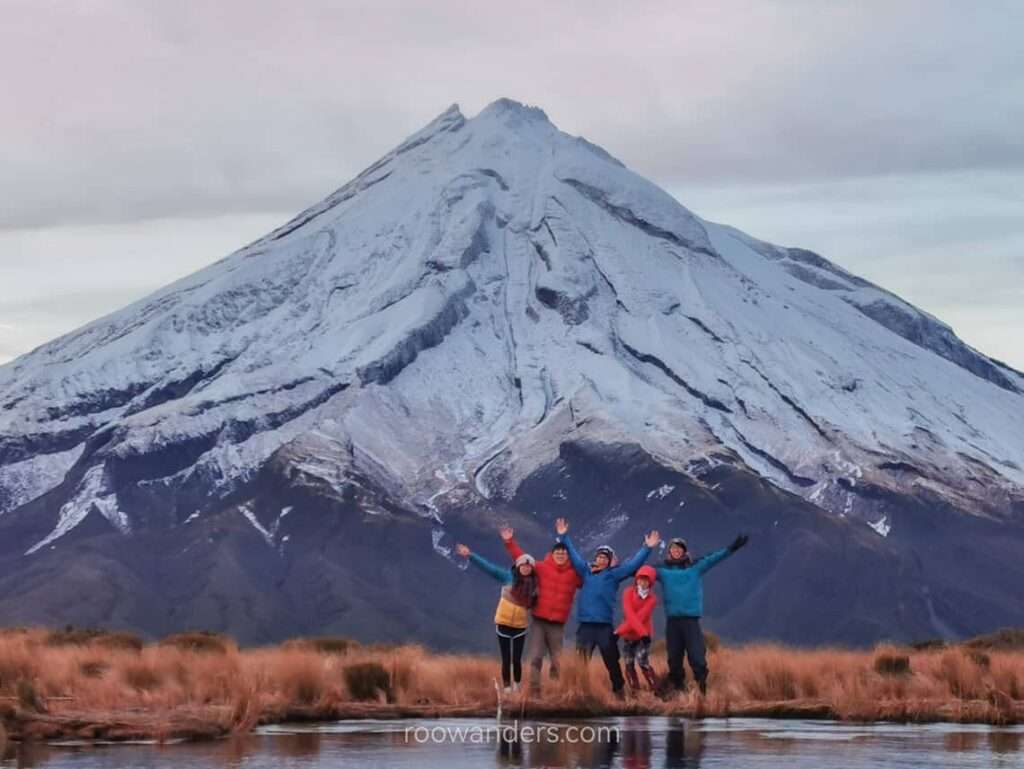
Being Ready During Winter
While the track is easy to do, the hut and the tarn are still within a mountainous zone where the weather can change unpredictably – especially in winter.
We encountered a pair of girls in jeans and sneakers attempting to descend back to the carpark at night without headlamps. They miscalculated their time to leave the mountain, and the weather had turned foul after sunset. It cannot get any more dangerous than descending under darkness in wet and windy conditions during winter.
In the end, trekkers in the hut persuaded the young ladies to stay for the night. However, both ladies had to take turns keeping the fire alive as they did not have sufficient warm clothes or sleeping bags, and that night was bitingly cold. One trekker brought along his inflatable mat; he donated his bunk mat to the two girls. Without it, they would have had to do away with the hard wooden benches.
Stay safe, and do your homework beforehand!
Taranaki from Pouakai Tarn Video
End
Mount Taranaki is one of the most beautiful mountains I have seen. Be sure to add it to your list of places to go on the North Island. After all, it takes under five hours from Auckland to reach the park – not too bad for a long weekend trip. And while you are there, be sure to check out the places to visit in New Plymouth. Why not take the chance to visit the Forgotten World Highway and the Republic of Whangamomona?






